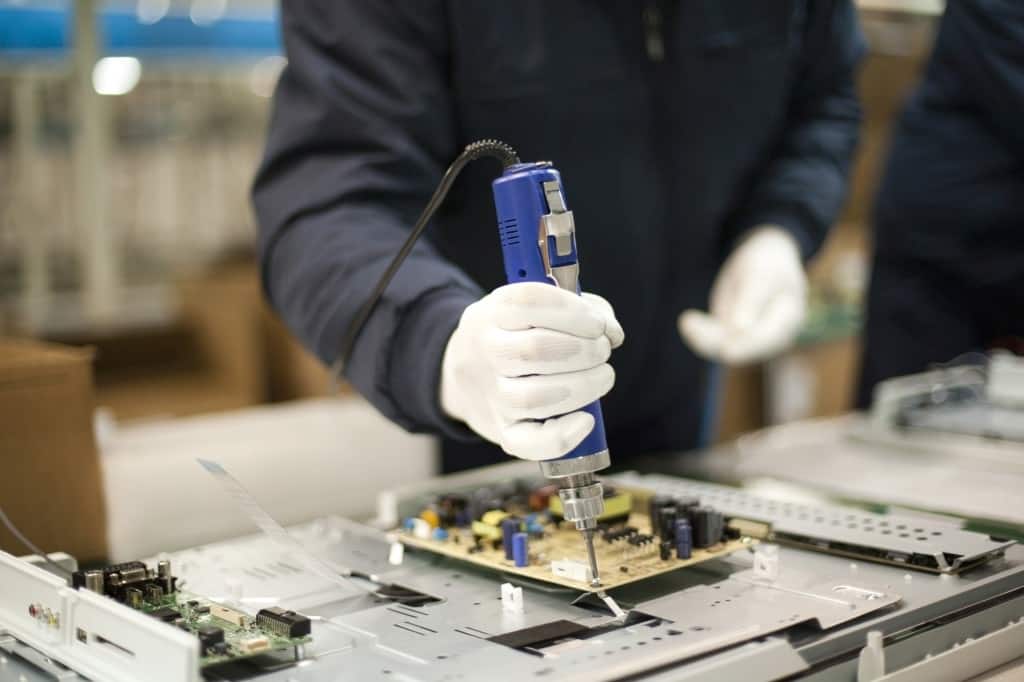
Hardware startups tend to fail. They are more prone to mistakes—and ultimately, fiascos—than their software counterparts. According to research conducted by CB Insights, approximately 97% of hardware startups don’t get off the ground or fizzle out without ever reaching a triumphant release. Common reasons for failures can be roughly divided into three groups: engineering and technical challenges, financial factors, and sales, marketing, and distribution issues.
Depending on the complexity of the features, hardware design, prototyping, testing, development, and mass production could push the delivery date into an indefinite future. Moreover, finding potential investors, suppliers, manufacturers, and distributors can also become a burden. What can hardware startups do to not burn through their financial resources, speed up their time to market, and deliver a product that’s market-fit?
Why Hardware Startups Fail
Jawbone, a fitness wearable startup backed by $930 million, failed to compete with market rivals and went bankrupt. Electronic cigarette and vaping product company Njoy raised about $181 million, but had to liquidate its business. A well-funded kitchen appliance maker Juicero, backed by $100 million, also kicked the bucket. Going deep into another study from CB Insights, it becomes clear that even successful crowdfunding campaigns and doting investors doesn’t mean a startup will make it to the auspicious launch.
The platform analyzed 382 failed businesses and found that the top three reasons hardware startups flop are:
- A lack of market demand for their products
- Overspending
- Fatigue after the initial crowdfunding success
That was the case with Coolest Cooler, when it officially went out of business. The project struggled to launch for five years, and ended up being so costly that the customers never received their coolers.
Vicis, a high-tech helmet producer, was once a very promising Seattle hardware startup. Suddenly, it found itself with no money in the bank and had to sell its assets. The reason for the company’s collapse was a high burn rate and excess focus on grabbing market share.
As seen above, hardware startups make a bunch of mistakes while bringing their ideas to fruition. To help teams navigate the path towards a successful product launch, we will zoom in on five inevitable hardware startup challenges every pioneer might encounter—and provide hardware startup tips on how to deal with them.
Top 5 Hardware Startup Challenges and How Your Company Could Avoid Them
Innovation Implementation
In recent years, hardware development technology has made incredible breakthroughs. The tech world is witnessing a number of rapidly emerging hardware solutions and technologies: industrial internet of things (IIoT), edge computing hardware platforms, AI specific hardware, 3D NAND technologies, new chip architecture, advanced mobile robots, additive manufacturing, industrial connectivity and storage solutions, etc.
In order to stay on the competitive edge and grasp the opportunities, hardware products need to be designed with innovation in mind—and in line with the major tech trends. Only then will your solution be efficient and future-proof.
Grabbing Potential Investors’ Attention
Investors are no longer willing to finance just an idea; instead, they want to see at least a working prototype or an MVP. VCs are rather reluctant when investing in hardware as building a device requires constant extra expenditures. It is recommended to start with joining hardware accelerator programs like Y Combinator, HAX, and Hardware.co to get initial funding.
A production-ready prototype with competitive advantages, such as strong market potential and the value it brings to end users, is a milestone you need to achieve. An even more effective way to attract hardware startup investors is to find an existing product that sells well and add your own features and updates on top of it.
Finding a Software Development Partner
For hardware startups, it is difficult to create reliable web apps, mobile apps and firmware for their products. Since hardware engineers don’t usually understand software well, they have to rely on third-party vendors to bring their ideas to life and deliver the best-suited connectivity option.
Special attention should be paid to firmware resources—especially if your company is working on an IoT device. It is crucial to develop embedded software that, besides collecting and processing data, ensures the device is secure and safe to use, and supports remote control and over-the-air (OTA) updates.
Overcoming Feature Creep
Many startup founders think that more device features translate into more value for their end users. However, the fact is that endless additions to your product only increase the risk of diminishing usability, extra expenditure, missing deadlines, and disappointing your customers. Feature creep is usually the result of poor research, planning, prioritization, the ongoing pursuit of perfection, and underestimating project complexity. To handle feature creep, start your project with an MVP, keep your project on course, and stick to the core product features.
A manufacturer of connected pet products addressed Softeq to design a smart dog collar. The client required the multi-sensor wearable device to help monitor a dog’s location, fitness activity, and behavior, and prevent car accidents and straying. Additionally, they wanted to equip the collar with a high-quality camera to track pets in real time. Already at the business analysis stage, our team proved the idea was not feasible—the product would be too bulky and expensive. The customer took our recommendations on board, and delivered the solution with three core features: geofences and location tracking, issuing voice commands via a microphone-speaker combo, and step count. This helped our client get their product out on time, on budget, and test the viability in the market without delay.
Working with Offshore Hardware Manufacturers
Once the board layout is optimized and verified for correct operation and you have a working MVP, take the time to find a hardware manufacturer that has proven experience with products like yours. It might make a lot of sense to go with an outsourcing manufacturer in China. Outsourcing mass device production overseas is optimal, but challenging. Any hardware startup will need a full-time person to purchase components, organize tooling, negotiate price and payment terms, and supervise the entire mass production process from start to finish to promptly eliminate any tech bugs.
A manufacturer of wearables for kids turned to Softeq to build a device with a pet simulation game. We crafted the entire solution in-house—game logic and graphics based on the client’s idea, custom firmware, a 3D enclosure model, circuit diagram, and printed circuit board.
To assist our client with manufacturing, we prepared all necessary documentation for production of the custom PCB, enclosure, and hardware components, and handed it over to the factory. Our engineers visited the factory several times to monitor every stage of the production process and assess the quality of the enclosure mold as well as all the test samples prior to mass production.
Avoiding Costly Mistakes
Software development startups may turn to a wealth of ready-made, verified, and bug-free resources to learn best practices and deliver an MVP quickly. For hardware teams, it is always a challenge to accelerate product development. Modifying hardware is a complicated process involving many restrictions. The problem is that any mistake (even the slightest!) will cost tons of time and money. This is also true when adding any functionality that requires a new hardware module.
Our team helped a startup fix an issue it was having with sound interference in a lung diagnostic device. Before it approached us, the company already had a unique stethoscope consisting of a microphone and a Bluetooth chip. The problem was that once the device was assembled, massive electromagnetic interference in recorded lung sounds was detected, making medical diagnosis impossible. After thorough examination, our team identified a routing defect in an assembled PCB. We managed to achieve better sound quality by applying an electromagnetic shielding on a printed circuit board.
If the process of hardware design is not well thought out beforehand, you may need to modify PCB design, redesign the enclosure, or to fine-tune embedded systems. The later the issue is detected, the more complicated it is to fix.
Conclusion
If you are still on the fence about launching a hardware startup, it’s important to remember that hardware startups that succeed can be an absolute goldmine. FitBit was on the verge of going out of business seven times but ultimately became the product standard. GoPro had a humble beginning, and managed to overcome fierce competition.
What is certain is that with so many startup challenges in hardware development, there is still a road to success. It is time-consuming, stressful, expensive, and complex, but rewarding if thoroughly preplanned and executed.
About the Author
Vera Solovyova is a Copywriter at Softeq–a full-stack development company and an Inc. 5000 honoree. We craft quality content to assist tech startups and large enterprises in engineering, transforming and scaling smart technology systems.


